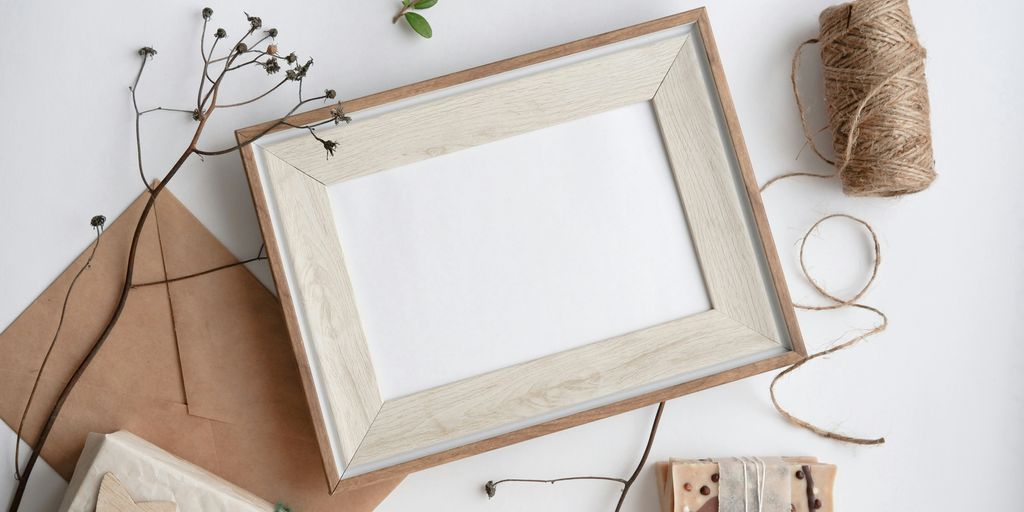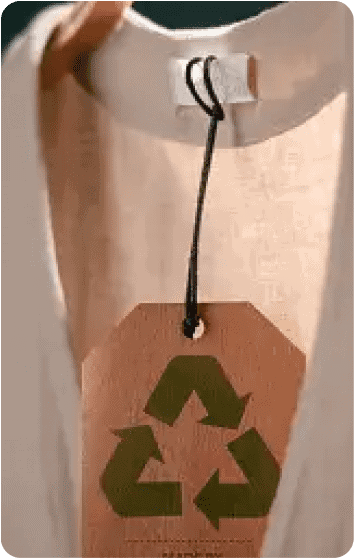Conversations on zero-waste living and sustainability always revolve around the overuse of plastic and encourage the consumption of natural products. However, this consumption of natural products also leads to a depletion of resources in the environment which is inherently damaging. A product that comes to my mind is toilet paper which is still primarily used in Europe, the USA, and East Asia. In fact, the world faced a global shortage of toilet paper, and a product often taken for granted became the center of attention!
While the need to remain clean after doing your business is important from a hygienic point of view, I can’t help but wonder if something as unsustainable as toilet paper is necessary. Yes, you heard me right. Just because it’s made of paper does not mean it’s eco-friendly! Alternative Toilet Paper Options are widely used in several countries and it is high time we do away with our toilet paper dependency and embrace sustainable substitutes. And trust me when I say that these substitutes are as satisfying to use (if not more!)
Lay back and relax as I provide you with the A to Z on toilet paper and take you on this journey describing everything from the history of toilet paper to its environmental impact and some amazing alternative toilet paper.

History Of Toilet Paper
The history of toilet paper may not be as vast and splendid as that of Alexander The Great and his conquests but it is certainly as interesting. Before the invention of toilet paper, civilizations across the globe came up with some out-of-the-box methods to clean up their ahem mess. It all starts in Ancient Rome (as it always does), where people used a “tersorium” which was basically a Mediterranean sponge on a stick. After using it to clean, rinse and wipe, it would be left back for the next person to use. It was to nobody’s surprise not very hygienic. Who would have thought?
Romans would also use objects like leaves, moss, or ceramic stone pieces but using hard or coarse materials like these led to skin irritations and abrasions as well as external hemorrhoids. Evidence has been found of cloth being used in Italy but since it was an expensive material that had to be woven it could only have been used by the elite few. Farmers in various regions in the past have also been using a lot of natural objects like corn cobs. These were so popular that even after other alternatives were discovered, farmers continued to use these.
The paper was invented in China during the 2nd Century. Fast forward to some 1,200 years and it had become immensely popular as a way to wipe after visiting the toilet. It was in 1391 that the first paper exclusively used in toilets was created by the Bureau of Imperial Supplies for the Chinese Emperor and his family to use. These toilet tissues were scented and a whopping three-quarters of a million were produced annually.
The concept of using paper as wipes became popularized in the West along with the invention of the printing press. As more paper became available to households, a new material to wipe within the bathroom emerged.
Finally, in 1857 Joseph Gayetty attempted to commercialize toilet paper for the very first time. His product was available in the form of a pack consisting of 500 loose sheets treated with aloe vera and was called “Medicated Paper for the Water Closet”. Unfortunately, Gayetty’s idea, while being ingenious wasn’t appreciated in his time and did not gain popularity.

Source – Library Of Congress
In 1890, the first perforated toilet paper rolls were introduced by the Scott Paper Company of Philadelphia. In 1930, the Northern Tissue Company sold the first “splinter-free” toilet paper. Then in 1942, St. Andrews Paper Mill in England created the first two-ply toilet tissue.
Now that we are done with our history lesson, let’s jump back to the present and delve into the many problems with toilet paper and more.
Cultures That Already Use Toilet Paper Alternatives
While this may seem surprising to a lot of our readers but not all cultures rely on toilet paper to clean up. In fact, this serves to prove that this product is not a necessity and may not even be the most ideal. Bidets are commonly used in several Asian and European countries. Bidets are a kind of fixture attached to the toilet seat that sprays water.
Countries like Singapore, the Philippines, Spain, and other regions of Asia use the squatting on a toilet pan technique to pass feces which requires less cleaning and is in that sense convenient. Many cultures also use a bucket and mug of water to clean up. Water faucets and mugs are in fact preferred in many cultures as they truly believe that toilet paper can be unhygienic and not clean properly. wiping could also cause injuries and bleeding for people suffering from chronic diarrhea.
I am basically telling you that toilet papers aren’t as essential as you’ve been conditioned to think they are. The switch to alternatives is much easier than you think. As to why this switch is necessary; well, let’s read on.
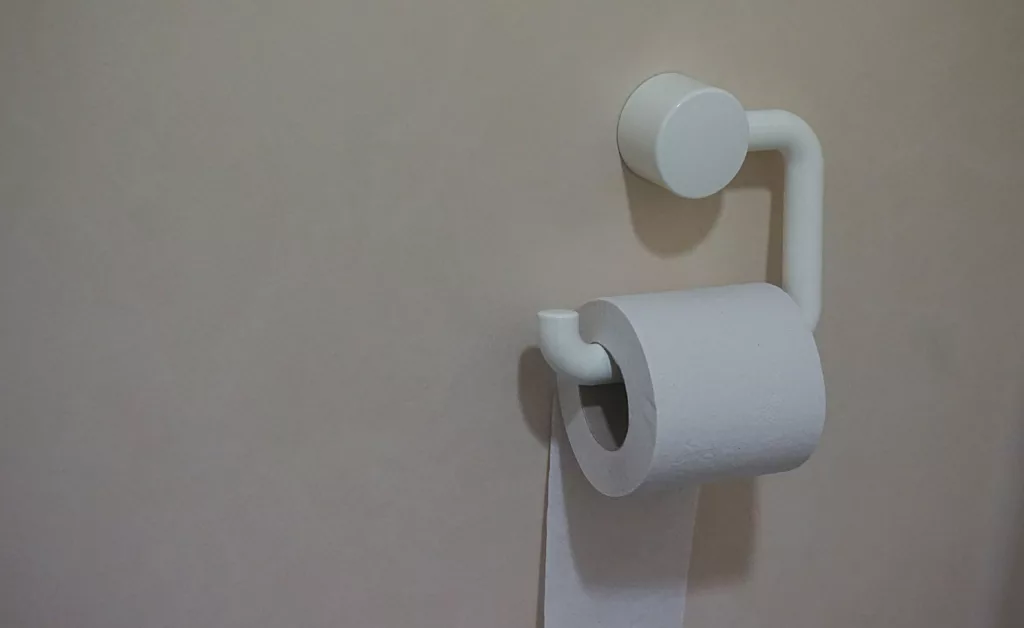
Is Toilet Paper Sustainable?
Well, your short answer is no. Absolutely not. But…isn’t toilet paper made of…paper? That’s biodegradable. So what’s the issue?
A study by the Natural Resources Defense Council (NRDC) revealed that the biggest toilet paper manufacturing brands are contributing to global warming by cutting down trees essential for creating oxygen. They do not use recycled paper so essentially trees are cut down for consumers to use these papers once and flush them down. Not very sustainable right? Kimberly-Clark, one of the biggest suppliers of toilet paper around the globe reduced the percentage of recycled paper it uses from 30% in 2011 to 23.5% in 2017. Many of the big players in this industry are becoming less sustainable.
Let’s go into this in-depth to look at the environmental impact of using toilet paper as well as the impact on individual companies.
Environmental Impact Of Toilet Paper
In a week, an average person uses 1-2 toilet paper rolls. While this is certainly heavy on your pocket, it has a much worse effect on the environment. This can all be attributed to how unsustainable the manufacturing process is. It is wasteful and polluting.

WASTEFUL MANUFACTURING PROCESS
This single-use paper product has an extremely wasteful production process. Old-growth forests are cut down and deforestation takes place, water is used to prepare the pulp, and the cost of manufacturing and transportation is also high. Toilet paper companies try to redeem themselves by planting new trees but these tend to be monoculture plantations that are energy-intensive and only consist of a single tree species. Hence, they most definitely are not adequate substitutes for the cut down of rich diverse forests and displace a lot of natural native plants and people.
According to reports, around 26 million metric tons of CO2 are released every year due to the clear-cutting of forests. In Southeastern USA, deforestation has resulted in forests having only half of the trees less than 40 years old. More than 28 million acres of the Boreal Forest in Canada have been logged between 1996 and 2015.
POLLUTION
The manufacturing process is also extremely polluting. Chemicals like chlorine are used to bleach the pulp and soften fibers. Till the 1990s, companies used elemental chlorine to bleach paper. This was highly polluting and released dioxins into the air and water. These did not degrade easily and also caused health complications in animals as well as humans.
Nowadays, companies have stopped using elemental chlorine. While the process is definitely less toxic, it still releases elemental chlorine by-products that pollute the environment. recycled paper uses fewer bleaching processes but also recycled toilet paper is more coarse and can harm our bodies by causing endocrine disruption. This is because BPA is present in recycled paper.
ORGANIC TOILET PAPER
You might have seen companies advertise themselves as selling organic toilet paper. However, it may as well be a greenwashing tactic by them so stay weary! Even if toilet paper is organic, it doesn’t guarantee sustainability as trees are still cut down to make it. All that’s lacking is the use of bleach and other chemicals. There has also been a rise in the popularity of bamboo toilet paper which is definitely a safer bet when going for organic toilet paper as bamboo is a fast-growing grass which implies it is easier to replant!
Toilet Paper Sustainability Scorecard
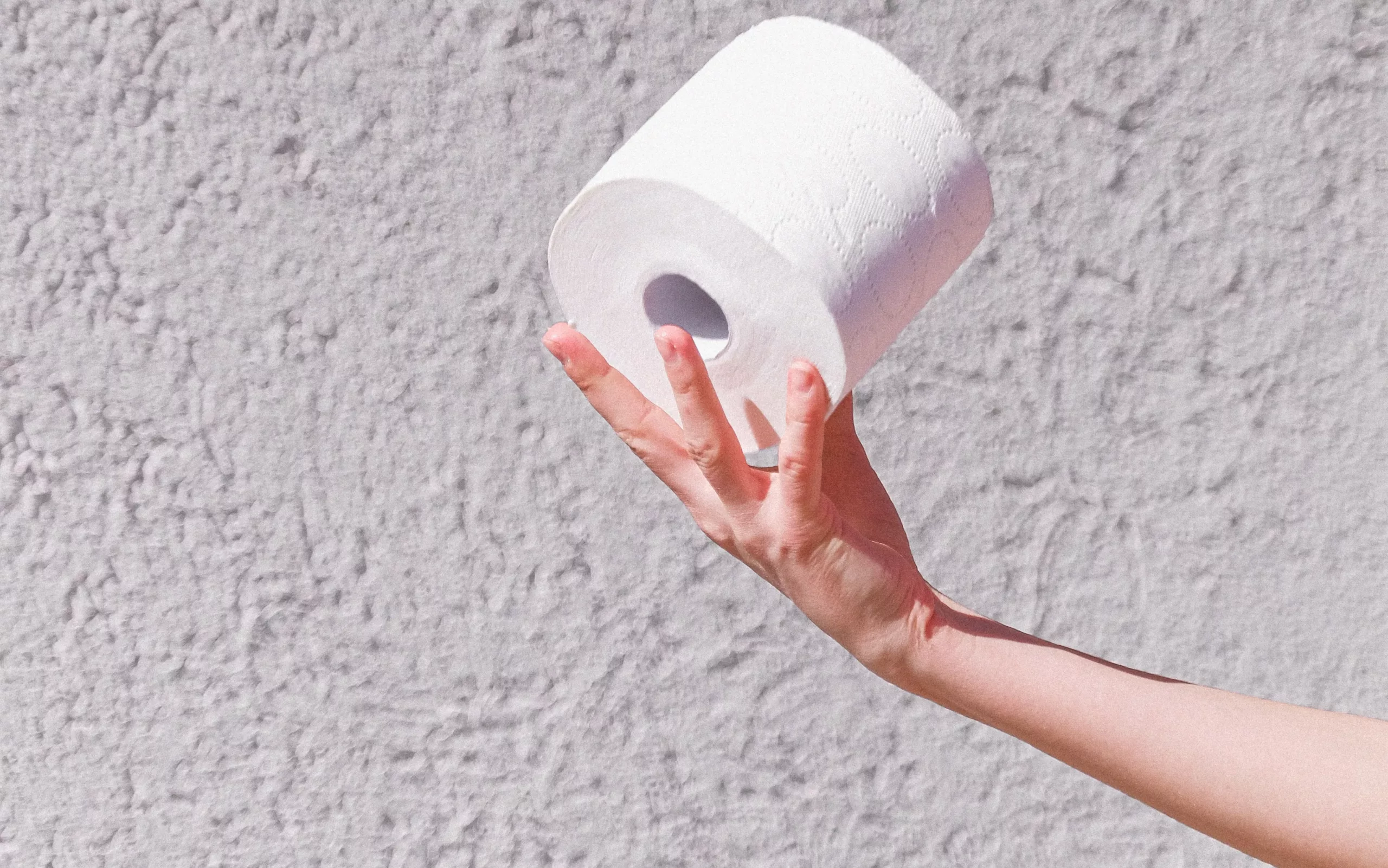
NRDC’s 2022 Tissue Scorecard reveals a disheartening trend among America’s largest tissue brands. P&G, Kimberly-Clark, and Georgia-Pacific, known for their flagship brands like Charmin, Cottonelle, and Quilted Northern, received F scores. These brands continue to rely heavily on virgin forest fiber and neglect to avoid sourcing from primary forests, such as the carbon-rich Canadian boreal forests. This unsustainable practice not only impacts the climate but also endangers communities and biodiversity.
Amidst the disappointing performance of major brands, the scorecard highlights a range of forest-friendly alternatives available to consumers. Out of the 142 products evaluated, 17 received A grades, and 17 received A-pluses, with brands utilizing post-consumer recycled content earning the highest marks. These brands demonstrate a lower carbon footprint and reduced forest impact, with recycled content emitting only one-third of the carbon emissions compared to tissue fiber made from virgin wood. Grocery store chains like Kroger, H-E-B, and Ahold Delhaize have introduced their own private label lines featuring 100 percent recycled content tissue products.
The scorecard also recognizes the growing market for toilet paper made from alternative fibers, particularly bamboo. Several brands using 100 percent bamboo fiber received B or B-plus grades. Bamboo offers a smaller environmental footprint compared to virgin forest fiber, but it is still larger than recycled fiber or agricultural residues like wheat straw. It is crucial to consider the sustainability of bamboo sourcing, with certification from the Forest Stewardship Council (FSC) indicating responsible practices that respect human rights and mitigate negative forest impacts.
While some brands have taken small steps toward sustainability, others still have a long way to go. Georgia-Pacific recently achieved a B-plus score by introducing a 100 percent recycled content toilet paper option for online consumers, following a similar move by Kimberly-Clark. However, P&G remains the only one among the “Big Three” tissue companies consistently receiving straight F scores across all their brands, including Charmin, Puffs, and Bounty. Despite testing a new Charmin Ultra Eco made from 100 percent bamboo, P&G falls short of offsetting the damage caused by their core virgin forest fiber products. Consumer preferences are evolving, with Seventh Generation’s more sustainable 100 percent recycled content toilet paper earning accolades in the New York Times Wirecutter 2022 “Best Toilet Paper” list.
The Toilet Paper Sustainability Scorecard serves as a call for brands to prioritize climate-friendly practices and make a meaningful difference in protecting our forests, communities, and biodiversity.
7 Sustainable Alternatives To Toilet Paper
Now that we have established just how unsustainable the continuous use of toilet paper can be, let us look into some toilet paper alternatives.
BIDET

Bidets are perhaps the most popular water-based toilet paper alternative and if you ask me, quite frankly, way more hygienic and comfortable than wiping with toilet paper. You can easily get a bidet fixed to your standard toilet or even as a separate fixture. Bidets use a high-pressure stream of water to clean without any hassle. they usually come attached with in-water supply and drainage. If you like to make your visit to the toilet luxurious and relaxing, you even get fancy bidets attached with heated seats, temperature controls, air dryers, and more. bidets are cost-effective, easy to maintain, and will not clog your toilets (unlike toilet paper).
Currently, three types of bidets are available for purchase: freestanding bidet, handheld portable bidet, and electronic bidet.
The most commonly used one is the freestanding bidet and it’s very popular in a number of European countries like France. They come with their own internal plumbing and are not specifically attached to the toilet. It has its own water unit that can be switched on or off at your convenience.
In the case of a handheld portable bidet, there is a nozzle attached to the toilet and since it is handheld, you can easily direct the flow of the water the way you want!
Electronic bidets are very popular in Japan. In fact, they seem so luxurious with the multiple functions attached, it is one of the things that tourists are always pleasantly surprised to experience while visiting Japan. To attach this type of bidet, your toilet seat will have to be replaced as it will now require electric output. It has several functions like heated seats, temperature controls, dryers, remote controls, and more.
MUG OF WATER AND YOUR HANDS
This may understandably seem a little icky to you as you’re not used to using your bare hands but several cultures use this technique to clean up. You use your hands to clean up every other part of your body so why not down there? Keep a designated bucket of water and a mug next to your toilet seat and use it once you are done with your business. This is again a very hygienic practice. Just remember to wash your hands with soap once you are done!
NEWSPAPERS

If you find it hard to let go of your paper, then this is a brilliant alternative. Instead of letting your newspapers lie vacant, why not put them to use? Of course, you will have to give up on some level of comfort but it is definitely worth saving the planet! Remember not to flush the newspapers down the toilet though as it will definitely clog the drain. Find alternative disposal methods for the same.
During the Great Depression, people used the Sears catalog to wipe down there so take a leaf out of their book and try it yourself. Just wet the newspaper a little before using it so it’s softer and easier to use.
REUSABLE CLOTH FOR THE TOILET
The best thing about this alternative is that it is already present in your house. You will have zero expenses. Take any old cloth you don’t use anymore such as a T-shirt or a skirt or a washcloth or towel, rag, anything. And here you have a reusable toilet cloth.
While I completely understand this alternative also feels icky, again, all it takes is a little getting used to it. They are basically reusable diapers. Just find good storage for them after use like a sealed bin or diaper pail and wash them after a few uses.
Honestly, this is a much better alternative than any wiping paper because it is cost-effective (essentially free) and wipes as effectively if not better than toilet paper!
WATER BOTTLES
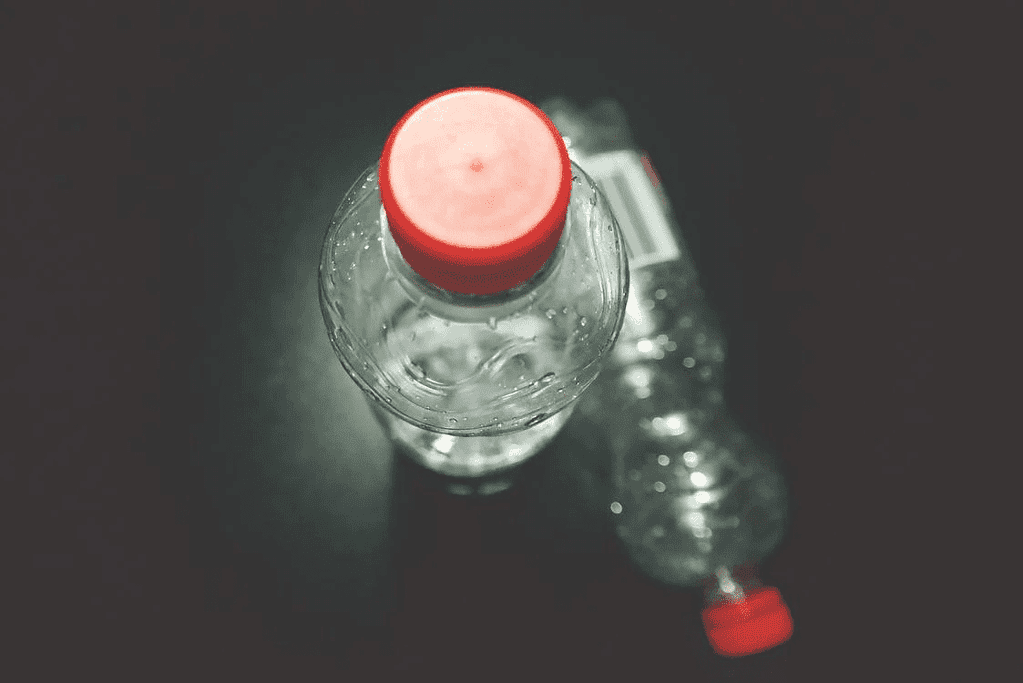
This one is for all the DIY and 5-minute crafts lovers. Go grab a few bottles and cut small holes in the cap. Fill these bottles with water and voila! Here you have a cheap alternative to bidets. Bidets are understandably not an expense everyone wants to make but trust me when I say that this method of cleaning is one of the best.
By using a plastic bottle, you are also upcycling in a very effective and creative way!
MULLEIN LEAVES

For all you 100% organic enthusiasts, have you ever thought of using plant parts to wipe? Mullein leaves are often referred to as nature’s toilet paper. This is attributed to them being extremely soft, fluffy, and highly water-absorbent. They are found in almost every part of the world from Europe, Northern Africa, and Asia, as well as the Americas and Australia.
So, the next time you step out on a nature excursion or simply on a fun walk around the neighborhood, keep an eye out for these sustainable toilet paper alternatives
and stock up on some mullein leaves!
MOSS

Moss is yet another good plant-based toilet paper substitute usually found in damp places in nature on rocks and trees. they are also very soft and won’t give you any cuts or bleeding. A word of caution though. Insects love moss. So, be sure to check the moss thoroughly before using it to wipe.
SOME MORE ALTERNATIVES
Anything can be reusable toilet paper if you put your heart into it! You can use sponges to clean (though I definitely don’t recommend sharing them), banana leaves, maple leaves, corn husks, old magazines, pamphlets, and more.
The alternatives to toilet paper are diverse. All it requires is a bit of imagination and eco-consciousness to come up with something that suits you the best. At the end of the day, going to the toilet is a private and personal matter. All of us strive to make this experience as comfortable as possible and we achieve this through different methods.
So readers, remember to stop stocking up on toilet paper and be eco-friendly! Want to discover more ways to embrace sustainability in your everyday life? Look no further! Visit Ecowiser, our platform dedicated to eco-friendly living, for a wealth of inspiring blogs, tips, and ideas.


